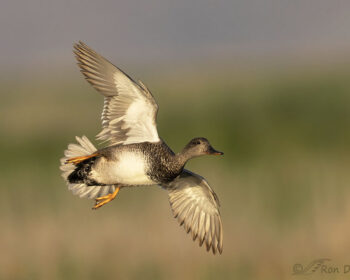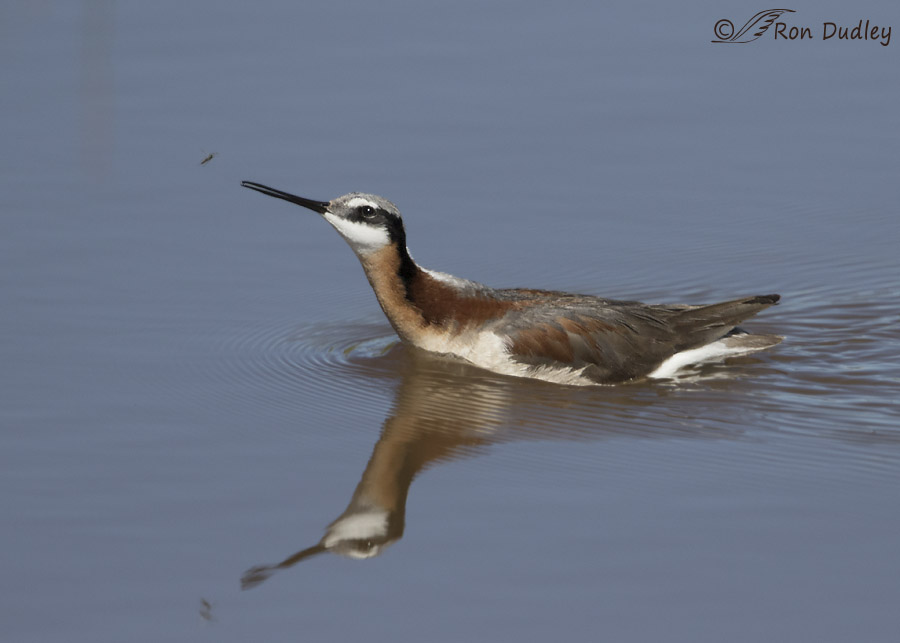Tag: midge
Wilson’s Phalarope Plumages And Feeding Techniques
Eared Grebes In Utah
Eared Grebes are the most abundant grebe on the planet and immediately after the breeding season most of the population on this continent migrates to either Mono Lake, California or the Great Salt Lake in my back yard where they feed on brine shrimp and brine flies. 1/800, f/7.1, ISO 500, 500 f/4, 1.4 tc Most of the grebes that I see are on the Great Salt Lake where it’s difficult to get quite close enough to them for photography purposes but occasionally I’ve seen them on smaller ponds where they’re attracted by insect hatches. 1/400, f/8, ISO 500, 500 f/4, 1.4 tc The eye of this species is incredibly red, almost unbelievably so. Just to be clear, I’ve not applied any saturation to these photos. 1/800, f/7.1, ISO 500, 500 f/4, 1.4 tc These birds are tireless feeders and divers. In scientific studies it’s estimated that they consume between 8,000 and 70,000 brine shrimp per day. That’s a lot of diving! 1/1600, f/8, ISO 500, 400 f/4, 1.4 tc When there’s an insect hatch they feed on the surface and as they scurry from bug to bug they’re very difficult to follow because of their quick turns and amazing swimming speed – it can be almost as challenging for the photographer as photographing small birds in flight. Here the grebe has spotted a floating midge on the left… 1/1600, f/8, ISO 400, 500 f/4, 1.4 tc approaches the midge very quickly… 1/1600, f/8, ISO 400, 500 f/4, 1.4…
Long-billed Curlews and “Bugs” of Antelope Island
Two days ago we were just about to go home after several photographically unproductive hours on Antelope Island because of a lack of cooperative subjects combined with a “cloud from hell” that hung over the island and ruined our light all morning when I spotted two Long-billed Curlews far below us. The area was accessible to our vehicle so we decided to investigate. Both Mia and I are very glad we did! Canon 7D, 1/3200, f/7.1, ISO 500, 500 f/4, 1.4 tc One of the two birds was this adult, perched attentively on this almost white Tintic Quartzite boulder. The curlew was very tolerant of us and let us get close and even allowed me to maneuver my pickup for a variety of backgrounds. Canon 7D, 1/2500, f/7.1, ISO 400, 500 f/4, 1.4 tc This adult was very relaxed in our presence and eventually settled into grooming and preening as it’s doing here. Canon 7D, 1/2500, f/7.1, ISO 400, 500 f/4, 1.4 tc It turns out that the second bird I had spotted from up above was this juvenile in the tall grasses and the adult had obviously chosen a relatively high perch in order to keep an eye on the youngster (a behavior we’ve seen multiple times in adults with chicks or young juveniles). Canon 7D, 1/1600, f/7.1, ISO 400, 500 f/4, 1.4 tc We spent quite some time with these two birds – the parent on the boulder and the juvenile foraging in the grasses. Occasionally the adult would fly off for a few…
Northern Harrier with Nesting Material
I’ve been photographing Northern Harriers in northern Utah for five years now and until earlier this week I’d only seen this species carrying nesting material once before and wasn’t able to photograph it. Harriers are very common here during winter but most of them head north for the breeding season and those that stay usually build their nests in inaccessible areas of the marsh, so it’s rare for me to see any nesting activities. Canon 7D, 500 f/4, 1.4 tc, 1/2000, f/7.1, ISO 400 Two days ago Mia and I were photographing birds at Bear River Migratory Bird Refuge. We were about to call it a day because it was late in the morning and light was no longer optimal when we spotted this harrier flying at a distance. We figured it would veer off before it got close, as they always seem to do out there, but this one kept coming toward us. We were watching it through our lenses and soon noticed that it had nesting material in its beak. Canon 7D, 500 f/4, 1.4 tc, 1/2000, f/7.1, ISO 400 By chance we happened to be at a place on the dirt road that was within 100′ or so of the nest of this bird. It decided to ignore us and come in to complete its delivery. Canon 7D, 500 f/4, 1.4 tc, 1/2000, f/7.1, ISO 400 The nest is apparently in this bed of last year’s dead Phragmites. The dark spots you see in the last three images of this…
Wilson’s Phalarope Plumages And Feeding Techniques
Eared Grebes In Utah
Eared Grebes are the most abundant grebe on the planet and immediately after the breeding season most of the population on this continent migrates to either Mono Lake, California or the Great Salt Lake in my back yard where they feed on brine shrimp and brine flies. 1/800, f/7.1, ISO 500, 500 f/4, 1.4 tc Most of the grebes that I see are on the Great Salt Lake where it’s difficult to get quite close enough to them for photography purposes but occasionally I’ve seen them on smaller ponds where they’re attracted by insect hatches. 1/400, f/8, ISO 500, 500 f/4, 1.4 tc The eye of this species is incredibly red, almost unbelievably so. Just to be clear, I’ve not applied any saturation to these photos. 1/800, f/7.1, ISO 500, 500 f/4, 1.4 tc These birds are tireless feeders and divers. In scientific studies it’s estimated that they consume between 8,000 and 70,000 brine shrimp per day. That’s a lot of diving! 1/1600, f/8, ISO 500, 400 f/4, 1.4 tc When there’s an insect hatch they feed on the surface and as they scurry from bug to bug they’re very difficult to follow because of their quick turns and amazing swimming speed – it can be almost as challenging for the photographer as photographing small birds in flight. Here the grebe has spotted a floating midge on the left… 1/1600, f/8, ISO 400, 500 f/4, 1.4 tc approaches the midge very quickly… 1/1600, f/8, ISO 400, 500 f/4, 1.4…
Long-billed Curlews and “Bugs” of Antelope Island
Two days ago we were just about to go home after several photographically unproductive hours on Antelope Island because of a lack of cooperative subjects combined with a “cloud from hell” that hung over the island and ruined our light all morning when I spotted two Long-billed Curlews far below us. The area was accessible to our vehicle so we decided to investigate. Both Mia and I are very glad we did! Canon 7D, 1/3200, f/7.1, ISO 500, 500 f/4, 1.4 tc One of the two birds was this adult, perched attentively on this almost white Tintic Quartzite boulder. The curlew was very tolerant of us and let us get close and even allowed me to maneuver my pickup for a variety of backgrounds. Canon 7D, 1/2500, f/7.1, ISO 400, 500 f/4, 1.4 tc This adult was very relaxed in our presence and eventually settled into grooming and preening as it’s doing here. Canon 7D, 1/2500, f/7.1, ISO 400, 500 f/4, 1.4 tc It turns out that the second bird I had spotted from up above was this juvenile in the tall grasses and the adult had obviously chosen a relatively high perch in order to keep an eye on the youngster (a behavior we’ve seen multiple times in adults with chicks or young juveniles). Canon 7D, 1/1600, f/7.1, ISO 400, 500 f/4, 1.4 tc We spent quite some time with these two birds – the parent on the boulder and the juvenile foraging in the grasses. Occasionally the adult would fly off for a few…
Northern Harrier with Nesting Material
I’ve been photographing Northern Harriers in northern Utah for five years now and until earlier this week I’d only seen this species carrying nesting material once before and wasn’t able to photograph it. Harriers are very common here during winter but most of them head north for the breeding season and those that stay usually build their nests in inaccessible areas of the marsh, so it’s rare for me to see any nesting activities. Canon 7D, 500 f/4, 1.4 tc, 1/2000, f/7.1, ISO 400 Two days ago Mia and I were photographing birds at Bear River Migratory Bird Refuge. We were about to call it a day because it was late in the morning and light was no longer optimal when we spotted this harrier flying at a distance. We figured it would veer off before it got close, as they always seem to do out there, but this one kept coming toward us. We were watching it through our lenses and soon noticed that it had nesting material in its beak. Canon 7D, 500 f/4, 1.4 tc, 1/2000, f/7.1, ISO 400 By chance we happened to be at a place on the dirt road that was within 100′ or so of the nest of this bird. It decided to ignore us and come in to complete its delivery. Canon 7D, 500 f/4, 1.4 tc, 1/2000, f/7.1, ISO 400 The nest is apparently in this bed of last year’s dead Phragmites. The dark spots you see in the last three images of this…



